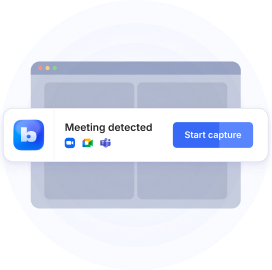
Imagine seamlessly integrating video conferencing into your existing applications, and creating a more unified communication experience. That's the magic of the Google Meet API. Whether you're looking to streamline workflows, gain valuable insights, or enhance collaboration within your apps, Meet API holds the key.
This guide shows you the world of Google Meet API, showcasing its potential to solve common communication challenges and providing developers with the knowledge to build innovative solutions. So, if you're ready to supercharge your applications and revolutionize video conferencing, keep reading and discover the exciting possibilities awaiting you.
What Is Meet API Used For?
What is API? Well, API stands for Application Programming Interfaces. They serve as the foundational components of contemporary technology and business architecture. Fundamentally, an API acts as a software intermediary facilitating communication between two applications.
The API empowers partners and customers to generate and set up Meet video conferences, enable their end users to participate in conferences, and share real-time updates seamlessly within their own apps. Simply put, you don't have to schedule a Google Meet session or send a meeting link directly from your Google Calendar anymore.
Meet API goes beyond simply initiating video calls. It offers more options for developers with a wide variety of functionalities to collaborate seamlessly with their applications. Let's explore some key ways the Meet API empowers innovation:
Programmatically create and manage your meeting
Forget juggling between a calendar event and app-hopping – this service lets you create a meeting directly within your own app. This is just one of the ways you can join a meeting on Google Meet. Imagine a user just working away, and then needing to chat with a colleague. They can start a Google Meet call instantly, without ever leaving their platform.
Here's how the Meet API makes scheduling a date a breeze:
- Integrate features that let users schedule Google Meet calls directly from their app. This could be triggered by tasks like creating a project, finalizing a deal, or simply needing to connect with someone.
- Save everyone time by setting up default meeting options. The API lets developers configure who's in charge, who can join, and even pre-populate an agenda – all without lifting a finger.
- The API allows applications to send an automated meeting link complete with links and details, ensuring everyone sees the meeting on their Google Calendar.
Accessing transcripts and recordings
Meet API unlocks valuable insights beyond the app and meeting link. Developers can access transcripts and recordings (availability may vary), and they create collaboration by allowing users to share them with those who missed the meeting.
Transcripts provide a searchable record for key points and action items, while recordings cater to diverse learning styles and accessibility needs. This integration streamlines workflows by enabling features like automatic meeting note summaries or data transfer to CRM systems.
Managing your members'
While the Meet API doesn't directly manage user accounts like adding or removing members, it empowers developers with functionalities related to participant information and controlling meeting access. This can be particularly useful for:
- Identifying attendees: The API allows developers to retrieve a list of participants in a meeting, including their names and potentially even join/leave timestamps.
- Controlling access levels: Developers can leverage the API to configure participant roles within a meeting. This might involve setting who can present their screen, mute/unmute others, or even control who can join the call in the first place.
Unlocking past meetings (developer preview)
The Google Meet API, with its "Unlocking Past Meetings" search functionality (currently in developer preview), offers a revolutionary glimpse into accessing historical meeting data. This empowers developers to build applications that delve beyond the live call experience.
Imagine being able to programmatically retrieve information about a person from a past meeting, unlocking a treasure trove of details:
- Google Meet times: Access the exact start and end times of a past meeting, allowing for precise record-keeping and analysis of meeting duration trends.
- Attendee details: Retrieve a list of participants for each meeting, including names and potentially even timestamps indicating when they joined and left the call.
Conclusion
The Google Meet API offers a powerful toolkit for developers, unlocking a new level of functionality within video conferencing applications. From programmatically creating and managing conferences in your Google Calendar to accessing transcripts and recordings, the API empowers developers to streamline workflows, enhance collaboration, and unlock valuable insights.
While Meet API offers robust features, it's important to remember it requires a Google Workspace account to sign in. For those seeking a more user-friendly recording solution that doesn't require a Workspace subscription, consider Bluedot as a google meet assistant.
Bluedot seamlessly integrates with Google Meet, allowing anyone to capture high-quality recordings of a meeting, regardless of account type. In addition to recording, Bluedot offers intelligent transcriptions, secure cloud file storage, and timestamps, making it a comprehensive solution for managing your Google Meet audio captures and optimizing your video conferencing experience.
FAQs
How can developers integrate the Meet API into their applications?
Developers can integrate the Meet API by following the documentation provided by Google, which includes guides, reference documentation, and code samples.
What functionalities does Meet API provide?
Meet API provides functionalities such as creating, managing, and joining a meeting programmatically, accessing transcripts and recordings, and managing members who join and leave a meeting.
Is there a cost associated with using the Meet API?
Google may offer the Meet API with certain pricing plans or usage-based billing. Developers should review Google's pricing documentation page for details.
What level of support does Google Meet offer for developers using the API?
Google provides developer support for the Meet API through documentation, community forums, and developer support channels.







